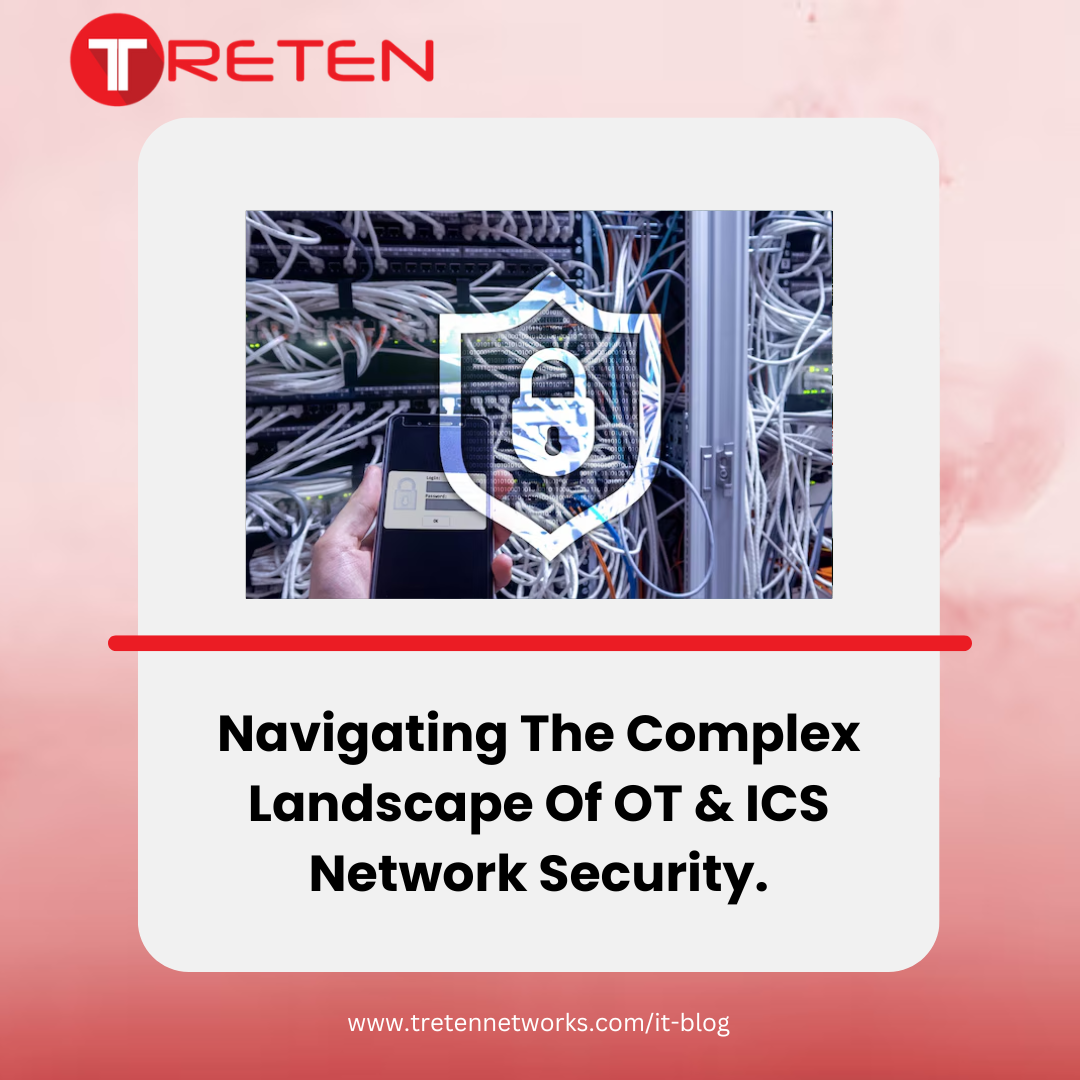The convergence of Operational Technology (OT) with company-wide Information Technology (IT) networks as well as the use of Industrial Control Systems (ICS) has exposed OT/ICS systems to an expanded cyber-attack surface and, in turn to a wider range of cyber threats. In this blog post, we will explore some of the primary concerns for IT decision makers and security professionals when it comes to the security of these critical infrastructures while offering attainable strategies and a real-world case study from the industrial manufacturing and energy sector using cybersecurity solutions from Claroty, Palo Alto Networks, and Fortinet.
Understanding the Unique Challenges of OT & ICS Security
- Legacy Systems: A number of OT and ICS infrastructure assets are running on legacy gear with no security features, leaving them wide open for compromise.
- Real-time Operations: Not continuously, though, as you saw in OT and ICS environments due to needing 24/7 operations; some implemented security could disrupt processes.
- Vendor Lock-in: There are limited security upgrade and update options when relying on proprietary hardware and software
- Lack of Cybersecurity Expertise: Most organisations within the OT and ICS sectors have probably never had a resident cyber security arm themselves to cope with emerging threats.
- Supply Chain Risks: Complicated supply chain for OT and ICS figuratively may open a can of worms where third party components could come in.
Common OT & ICS Security Threats
- Malware: Ransomware, viruses and worms can shut down operations and lead to data breach.
- Phishing Attacks: It has social engineering tactics which can manipulate employees to give away their credentials or click on malicious links.
- Denial of Service (DoS) Attacks: Your website could be blocked (which can create downtime) if the systems are overwhelmed by the traffic.
- Unauthorized Access: Which allow unauthorized individuals to control networks systems in order to steal data or launch attacks.
- Industrial Espionage: OT and ICS systems may be sites of interest for competitors or nation-states looking to use them in order to push an advantage in their favour, or disrupt critical infrastructure.
Key Strategies for Securing OT & ICS Networks
- Network Segmentation: In order to contain infections and increase the possibility of saving a breach, segment OT and ICS networks from IT networks.
- Access Controls: Use effective physical and logic barriers to sensitive information systems and information. Utilize multi-factor authentication and role-based access control (RBAC) to enhance security.
- Patch Management: Routinely apply patches to OT and ICS systems in order to remedy known issues in the system.
- Security Monitoring and Incident Response: Utilize intrusion detection systems (IDS) and preventive systems (IPS) in the surveillance of the system traffic for suspicious acts. Write response plans that help in responding to security incidents and address them effectively.
- Employee Training: Train employees on the principles of information security to include the use of internet appropriately, the ways to identify and deal with phishing, and even the use of basic operational hygiene of one’s password.
- Risk Assessment and Management: Perform routine risk assessments to detect vulnerabilities and prioritize efforts for mitigation. Formulate a thorough risk management strategy to tackle potential threats.
- Supply Chain Security: Assess the security protocols of third-party vendors and suppliers to confirm their compliance with your organization’s standards.
Case Studies
Manufacturing:
A Global Automotive Manufacturer: This company undergone a critical ransomware attack that interrupted the production lines and brought about high financial losses. To avoid incidents like these, they installed a network segmentation solution from Claroty, improved access controls with Palo Alto Networks’ firewall technology, and allocated funds for employees’ cybersecurity training.
A Chemical Plant: A supply chain weakness has authorized the disclosure of confidential data, as a result, occurred a data breach. The company reacted by carrying out a thorough risk analysis of its third-party suppliers and enforcing more vendor management processes. They also utilized Fortinet’s security fabric to improve their whole security posture.
Energy:
A Power Generation Company: A Distributed Denial of Service (DDoS) attack targeted the company’s control systems, causing temporary outages. To mitigate future risks, they deployed DDoS mitigation solutions and enhanced network monitoring capabilities using Claroty’s platform.
An Oil and Gas Pipeline Operator: A phishing attack compromised employee credentials, granting unauthorized access to critical systems. The business made it impossible for users to log into their accounts by using TOBA (Two or more Biometric Authentication) and educating them about other types of attacks. Besides, they also relied on Palo Alto Networks’ last-generation firewall to block attacks against their network.
Manufacturing and energy sectors can save their critical infrastructure and guarantee the continuity of operations by recognizing the different difficulties and risks that stand up to OT and ICS environments and implementing effective security measures with the help of solutions from Claroty, Palo Alto Networks, and Fortinet.
Kick-off your next stage in safeguarding your OT and ICS environments by reaching out to our cybersecurity experts today. Get a free consultation and recommendations tailored just for you.


